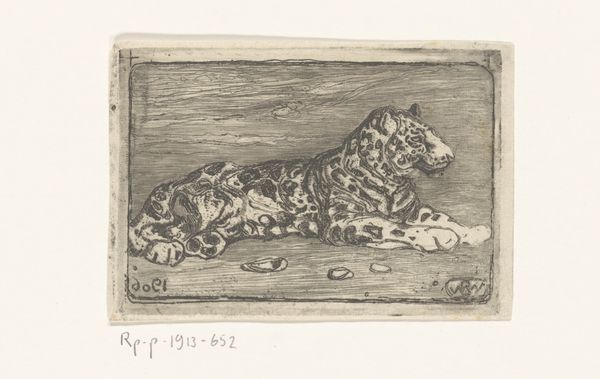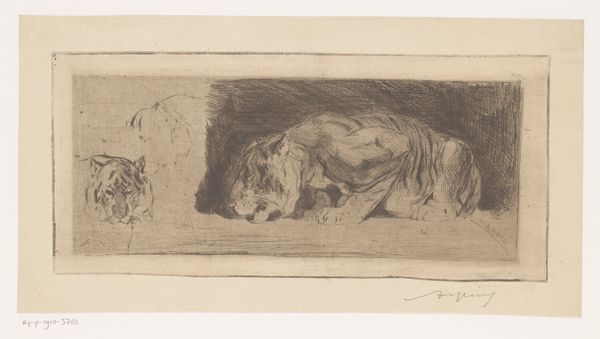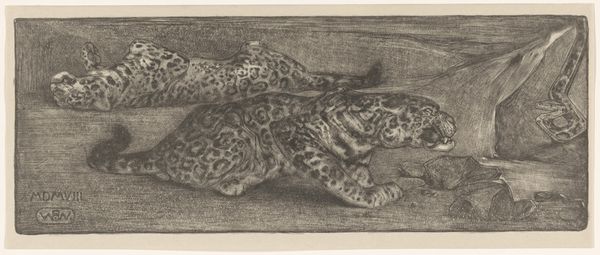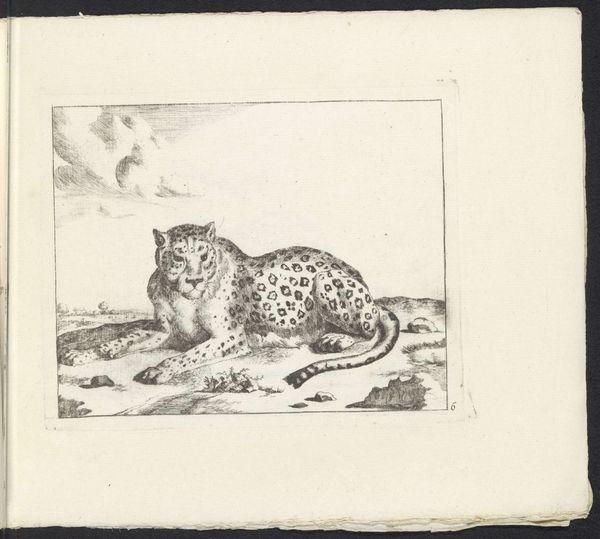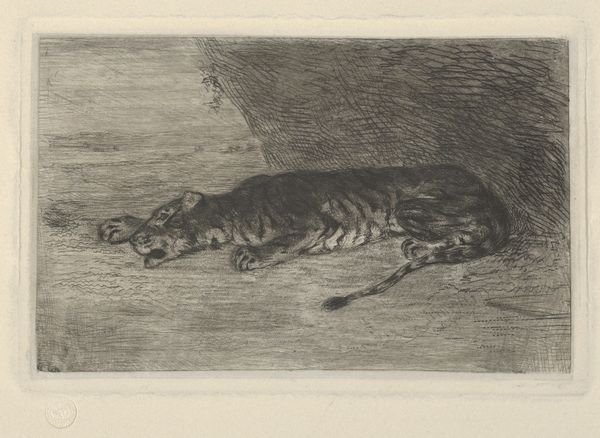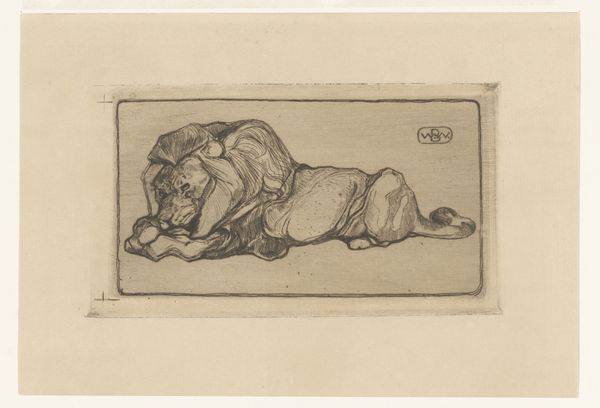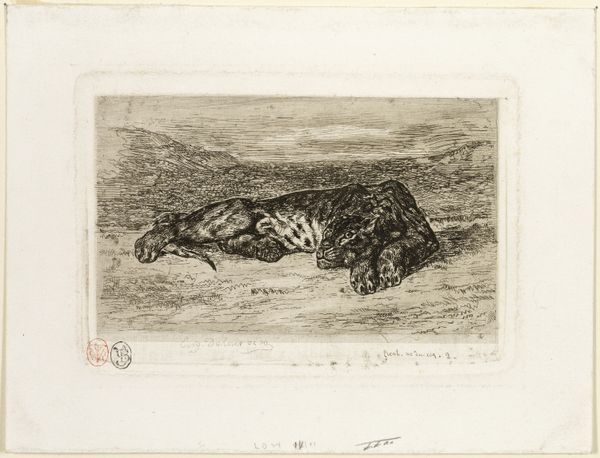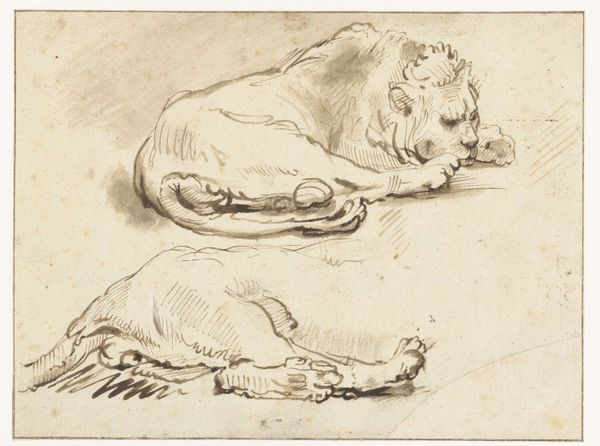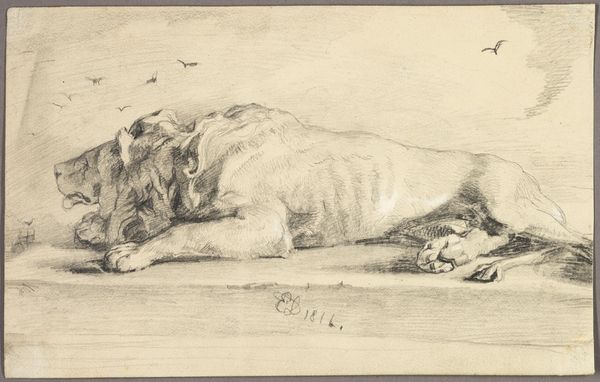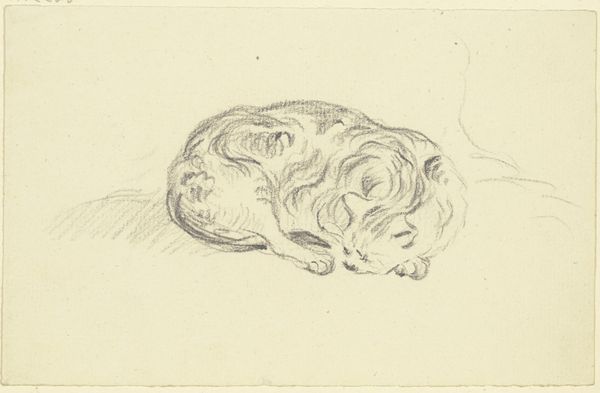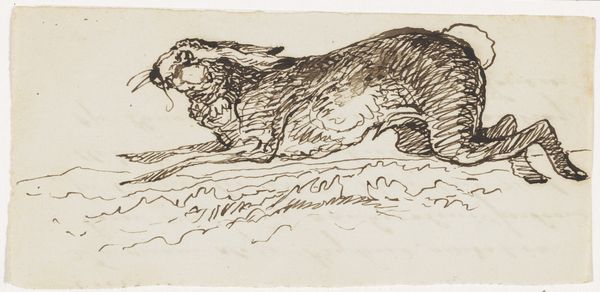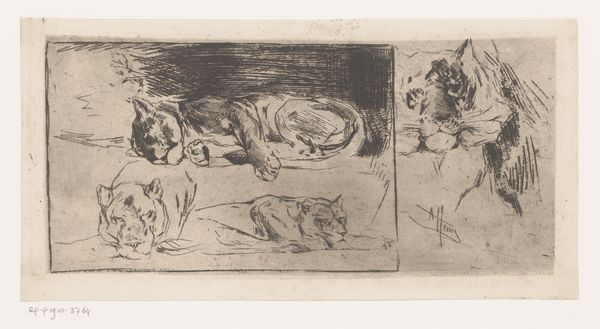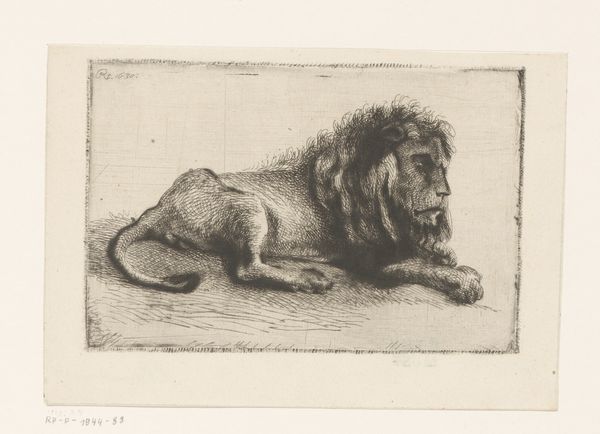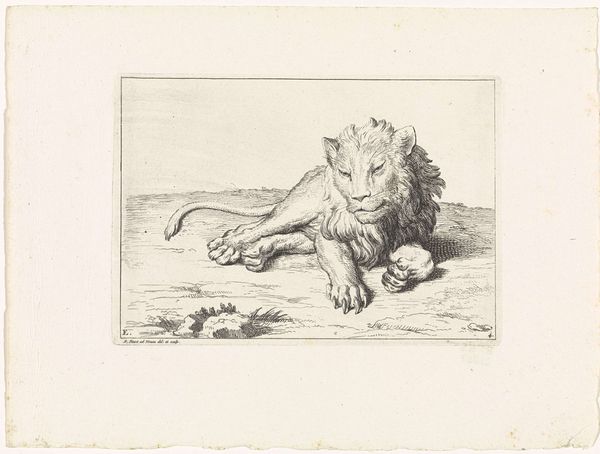
print, etching
#
ink drawing
#
animal
# print
#
etching
#
landscape
#
etching
#
figuration
Dimensions: height 67 mm, width 98 mm
Copyright: Rijks Museum: Open Domain
Curator: Before us we have “Liggende panter,” or “Reclining Panther,” an etching dating back to 1906 by Bernard Willem Wierink, found here at the Rijksmuseum. Editor: The tawny, almost faded colour immediately strikes me. It gives the image a subdued, somewhat melancholic quality. Curator: It's fascinating how Wierink employs the etching technique to capture the essence of this creature. There's a clear interest in depicting the animal's form, but perhaps also something deeper. How do you perceive its significance in terms of animal representation and symbolism? Editor: Structurally, the composition is quite simple: the horizontal lines in the background contrasting against the languid curve of the panther. But within that framework, the detailed rendering of the fur markings creates a vibrant surface texture, drawing the eye in. Curator: Indeed, it is impossible to ignore that this was the era of high colonialism. We should recognize how representations of exotic animals were intertwined with notions of power, domination, and the human relationship to the natural world. Wierink was portraying not just an animal, but also reflecting broader attitudes toward the wild and the colonial gaze that shaped these representations. Editor: I see your point. Considering the background and textures now in more detail, I can say that the landscape feels intentionally barren and desolate; that sense is reinforced by the scattered rocks near the panther’s paws. There is almost an exaggeration that serves as an echo of how colonial authorities at this time would flatten nuance for their advantage. Curator: And it makes us question how such depictions further entrenched prejudiced understandings of the animal as “other” and divorced it from its complex ecological context. It compels us to reflect upon this historical artwork and the legacies of imperialism it quietly embodies. Editor: Precisely! Through such structural analyses, we reveal hidden facets of its meaning, acknowledging and integrating its social impacts and history, which might have previously remained veiled behind the simple beauty of form.
Comments
No comments
Be the first to comment and join the conversation on the ultimate creative platform.
